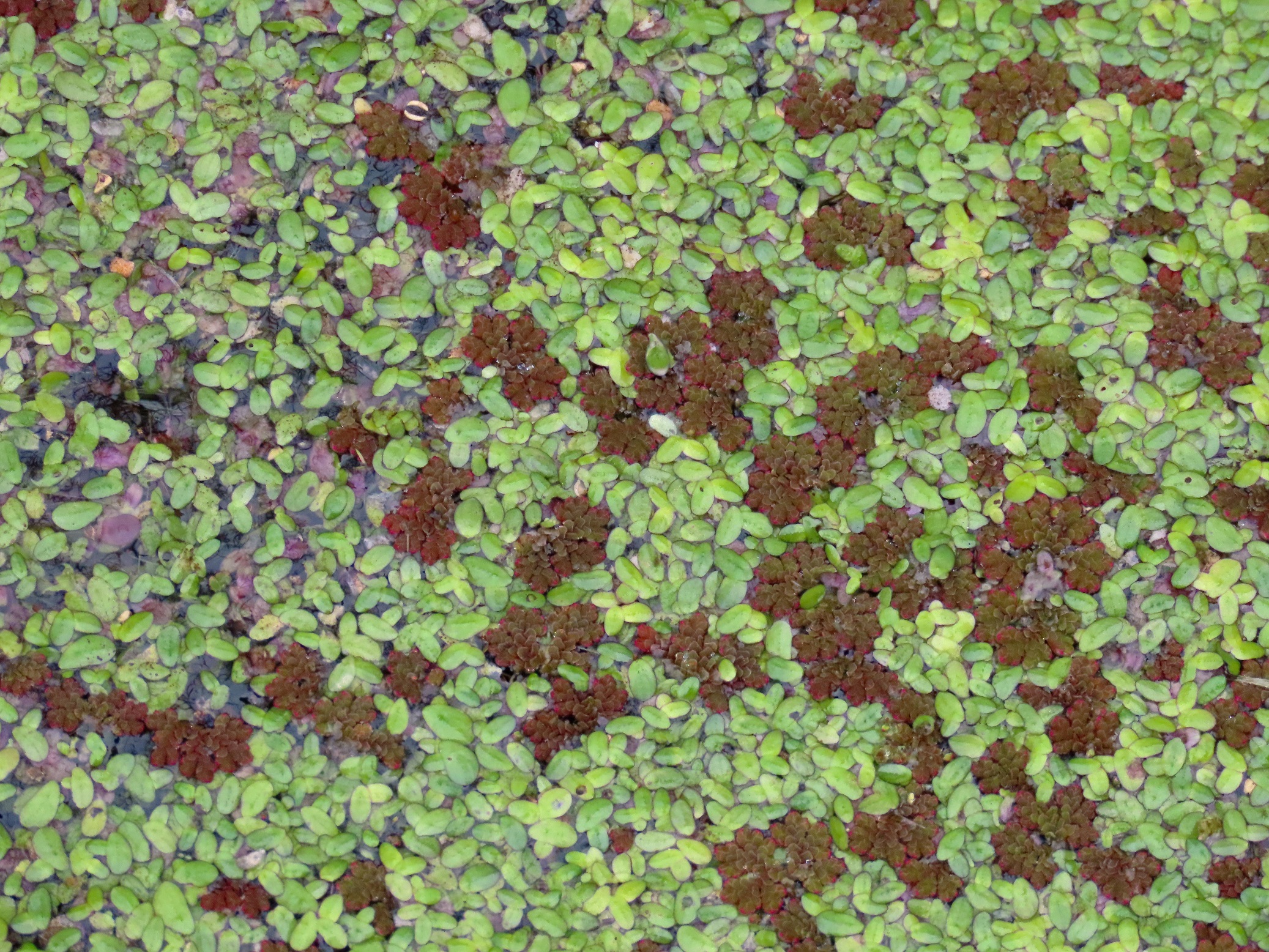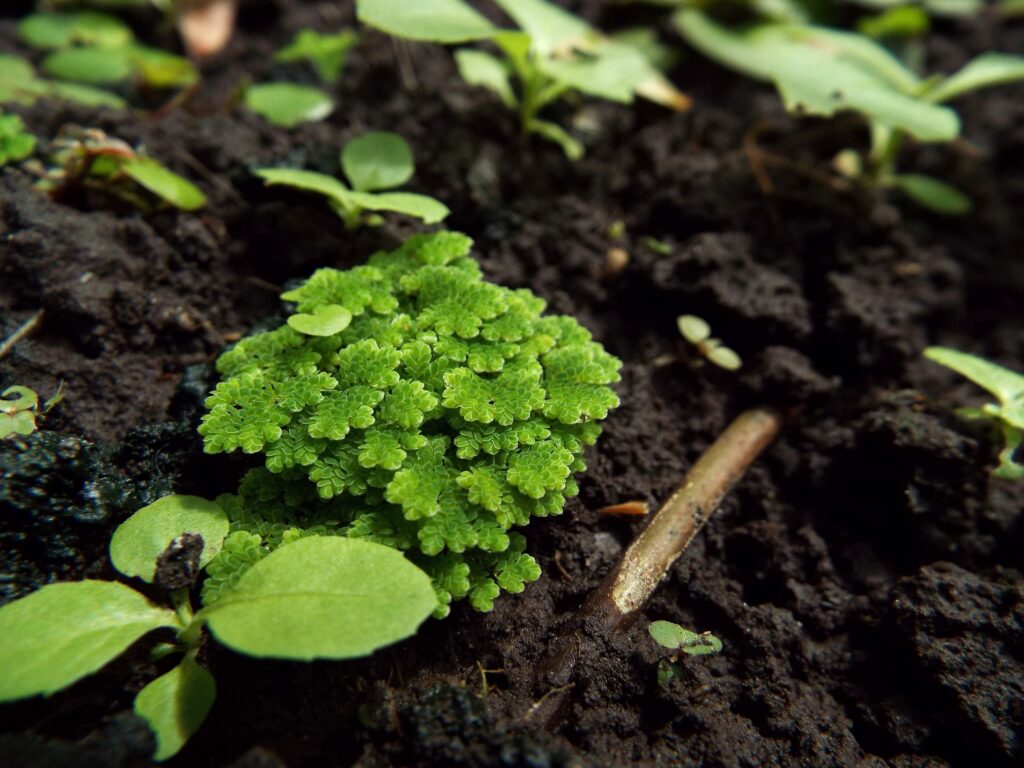

This week for Flora and Fauna Friday we have a miniature, multicolored, floating fern: Eastern Mosquito Fern (Azolla caroliniana).
Mosquito Fern is much like Duckweed. It’s a tiny planktonic plant found in stagnant wetlands around the Lowcountry. Wooded ponds and marshes are where it makes its home. It sets no roots, only drinking nomadic nourishment from the surface of a swamp. Mosquito fern ranges from an emerald-green to a brick-red glowing in a halo of pink. Mosquito Fern turns red when exposed to excessive sunlight. This is sort of like tanning in humans. Many plants do this but not as obviously. This red color comes from pigments in the plant that act to block sunlight from entering its cells. Typically, plants are trying to get as much light as possible but there’s also an upper limit to how much they can photosynthesize. If more light enters the plant than it can use, the plant could overheat and cook. So Mosquito Fern, which might find itself in the center of a shallow sunny pond in summer, has a tendency to don a protective ruby sunscreen.
Duckweed is always verdant, which makes the often blushed Mosquito Fern easy to spot from a distance. Upon closer examination, Mosquito Fern has stems and leaves with a central set of roots. It takes on a jagged, branching shape in a circular arrangement with age where duckweed sticks to two or three ovular leaves. The least obvious but most significant difference between the two is that Mosquito Fern can fix nitrogen. This gives them a distinct niche apart from Duckweed which must rely on water borne nitrogen for growth. It also means Mosquito Fern is extra-rich in proteins, making it a great alternative livestock feed. Lastly, Duckweed is a flowering plant and Mosquito Fern is a true fern, if that wasn’t already obvious. The two fill similar niches but are vastly different physiologically.